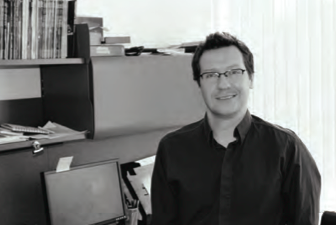 In the popular press, much of the discussion around stem cells centers on one key characteristic that makes them special: the ability to differentiate into a variety of cell types. However, stem cells have many other features that allow them to play their unique role in the body. For example, the process of self-renewal allows stem cells to give rise to more stem cells and a stem cell’s homing ability can direct it to the site of an injury. Understanding the molecular workings of properties such as these will play a critical role in the development of stem cell clinical applications.
In the popular press, much of the discussion around stem cells centers on one key characteristic that makes them special: the ability to differentiate into a variety of cell types. However, stem cells have many other features that allow them to play their unique role in the body. For example, the process of self-renewal allows stem cells to give rise to more stem cells and a stem cell’s homing ability can direct it to the site of an injury. Understanding the molecular workings of properties such as these will play a critical role in the development of stem cell clinical applications.
A defining feature of a stem cell is that it doesn’t exhaust itself, and one way that it avoids exhaustion is by maintaining and reestablishing a state of hibernation after a period of repair. HSCI Principal Faculty member, Andrew Brack, PhD, has been studying this process, reversible quiescence, in muscle stem cells and recently published his work in the journal Cell Stem Cell.
The team found a protein, Sprouty1, that plays a fundamental role in the process by which stem cells enter and exit this hibernation- like state, and showed that without Sprouty1, the stem cell pool in muscle is rapidly depleted after injury. The Brack laboratory specializes in muscle stem cells but through collaborations with other researchers is looking to see if Sprouty1 plays a similar role in other types of stem cells.
The team used the technology of genetic lineage tracking, which allows scientists to trace the fate of a single cell or a population of cells over time by having the cell change color when a designated gene is turned on. This change occurs at a genetic level and is therefore permanent for that cell and any cell it gives rise to, giving scientists the ability to trace that cell and its history. As a result, a scientist can effectively say, “Show me all the cells that are expressing a particular gene right now” and then track where these cells go, what they do, and what types of cells they give rise to.
The role of reversible quiescence, and perhaps Sprouty1 in particular, may become important in developing therapies for diseases such as muscular dystrophy. The muscle of individuals with this disease are susceptible to damage, thus the muscle stem cells are constantly activating and trying to replenish the tissue.
This ongoing degeneration and regeneration process leads to the exhaustion of the stem cell pool. “In terms of general disease settings, anything having to do with stress and high demand, where the stem cells are turning over, will lead to their exhaustion,” Brack said. “So we need to find a way to pull it back a little bit and let them go to sleep as well.”
